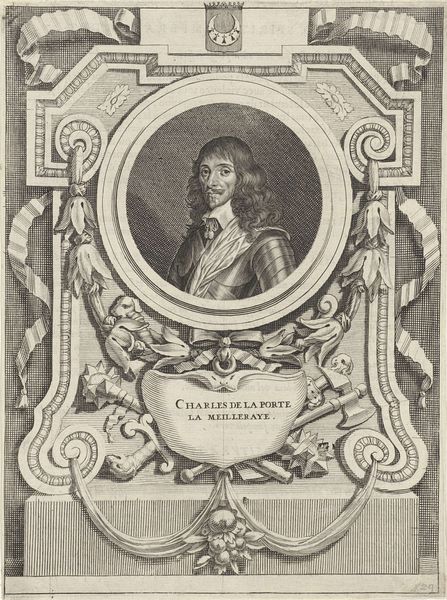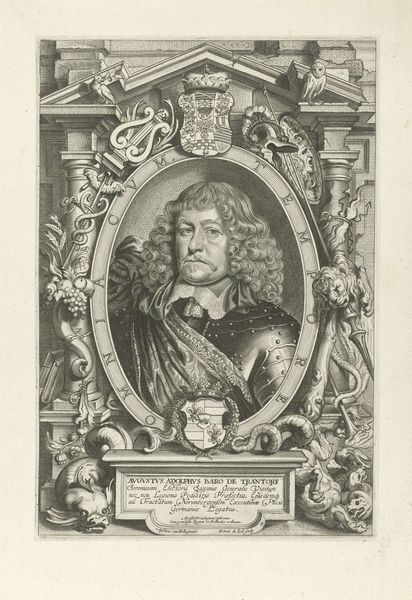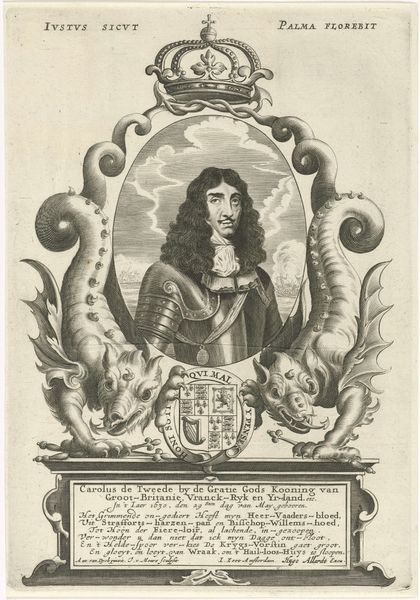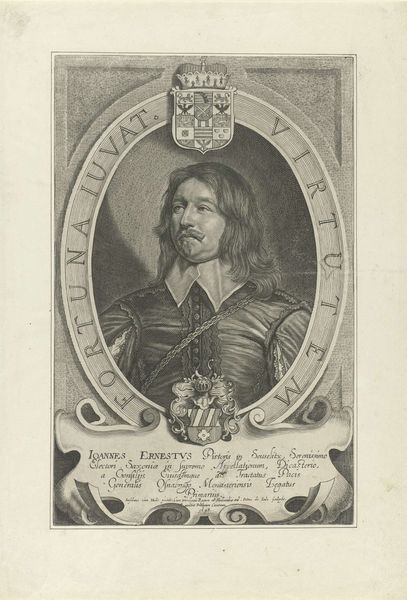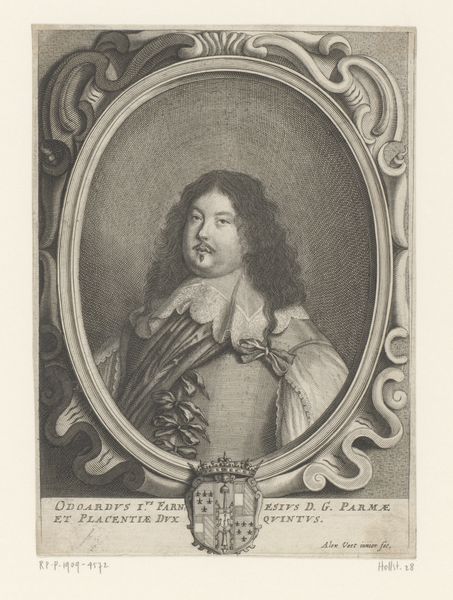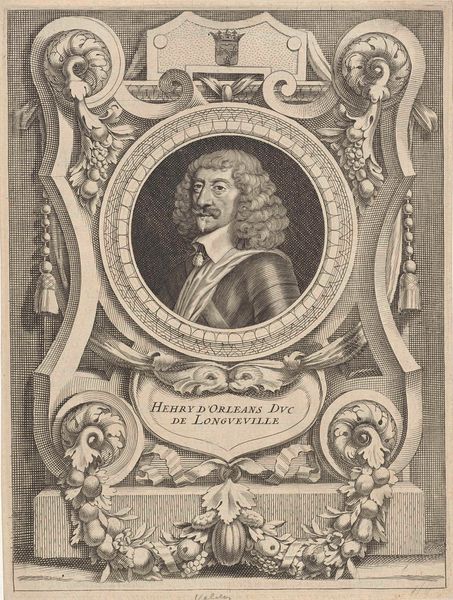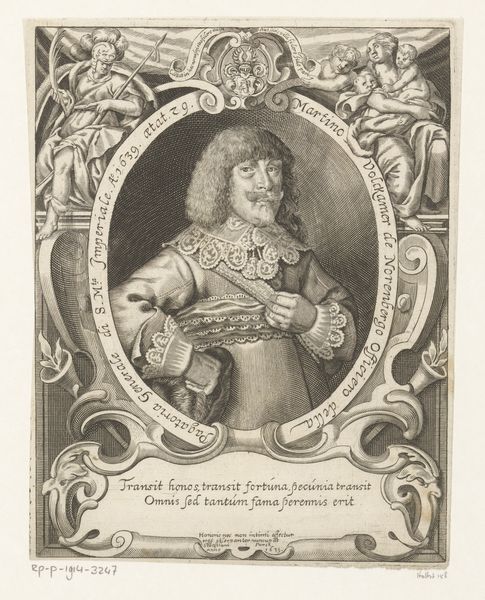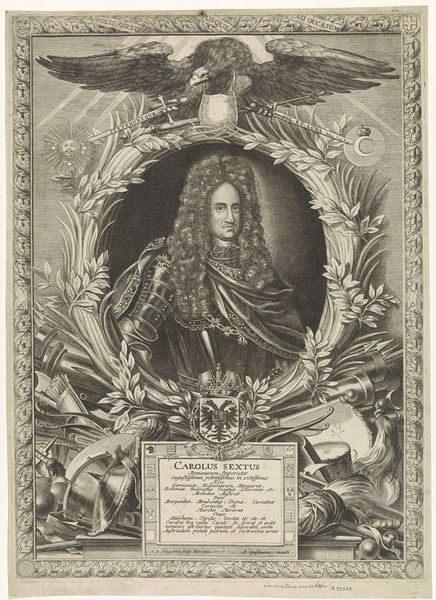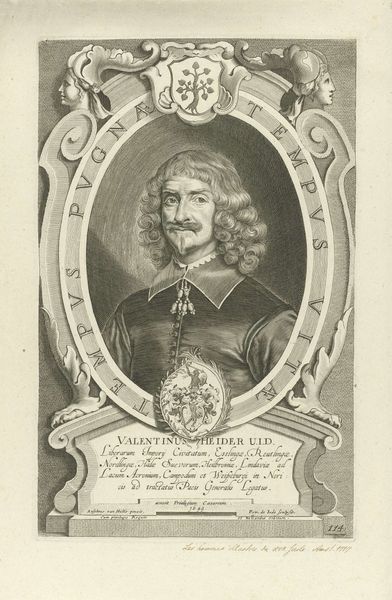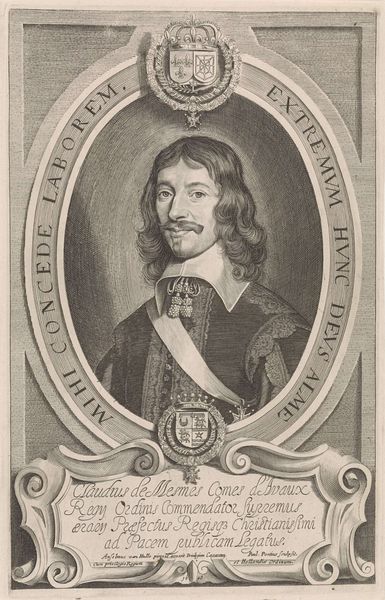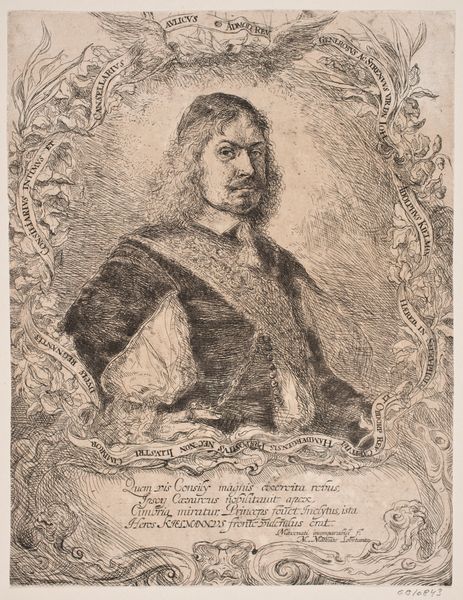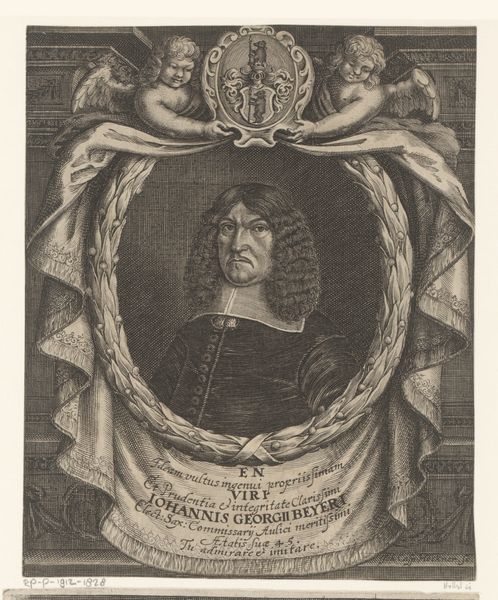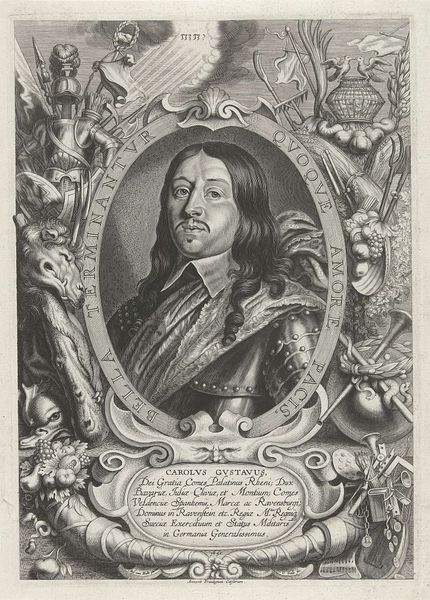
print, engraving
#
portrait
#
baroque
#
pen drawing
#
mechanical pen drawing
# print
#
pen illustration
#
form
#
line
#
history-painting
#
engraving
Dimensions: height 358 mm, width 291 mm
Copyright: Rijks Museum: Open Domain
Curator: Look at the intricate detail in this engraving. We're looking at "Portret van Emanuel Froben" created in 1666 by I. Wyngaerden. It’s a print, an example of Baroque portraiture. Editor: The sheer weight of visual information is my first impression. The portrait itself is striking, but the overwhelming decorative elements make it difficult to focus. There's something about the lions, putti, and text that creates a sense of loaded symbolism. Curator: Absolutely. This work has clear political undertones, presenting Froben not just as an individual, but as a figure deeply entwined with lineage and power. The symbolic program is deliberately constructed. Note the prominent inscription detailing his ancestry. Editor: That’s right, the inscription! I immediately read the heraldic imagery around his portrait. The caduceus above hints at commerce and negotiation, but also perhaps at Froben's ability to mediate or connect different spheres of influence, tying in beautifully to this era of noble authority. Curator: Indeed, and considering this print circulated amongst a specific societal circle, it functioned as a reinforcement of those very hierarchies. By depicting Froben framed with symbols of authority, Wyngaerden emphasizes and solidifies his place within the existing social and political landscape. The inclusion of those seemingly "decorative elements," as you termed them, were crucial in the social meaning of the artwork. Editor: So, even seemingly frivolous elements like the chubby putti perched atop the frame contribute to constructing and affirming his power. I think this work reflects the era's tendency to use symbolic languages, layering meaning upon meaning through visual motifs to bolster an image of legitimacy. Curator: Exactly, and the style of Baroque portraiture contributed to that effect. Wyngaerden utilizes fine lines to give great attention to detail of the composition of Froben’s aristocratic physiognomy, from his striking hair to his confident bearing. That conveys another layer of Froben’s social station to the work, making sure that nobody mistakes him as just a regular member of society. Editor: Examining how images carry emotional and cultural weight over time can tell us a lot. This portrait serves not just as a likeness but as a carefully constructed symbol that reflects and reinforces existing hierarchies and the place of a nobleman in society during the 17th century. Curator: By investigating the historic contexts surrounding this engraving, we unveil the intentions of image making during that period of artistic production. Editor: Absolutely. And understanding these works of art makes us reconsider art history today.
Comments
No comments
Be the first to comment and join the conversation on the ultimate creative platform.
